Check out these virtual events coming up this month at NCA!
Read MoreIs a manufacturer required to report if a nut-free product was made in a facility that processes nuts?
Read MoreThis memorandum provides a detailed explanation of the expanded geographic preference option. CNP operators, State agencies purchasing for CNPs, and the USDA Department of Defense Fresh Fruit and Vegetable Program (USDA DoD Fresh) may use local as a specification and continue to set a geographic preference when soliciting or buying unprocessed agricultural products.
Read MoreWhere can you find allergens listed on a food’s packaging?
Read MoreCheck out these virtual events coming up this month at NCA!
Read MoreCheck out these virtual events coming up this month at NCA!
Read MoreWe’re thrilled to inform you that the 2024 National Child Nutrition Conference offers an excellent opportunity for you to earn Continuing Professional Education Units (CPEUs) while immersing yourself in a world of learning and networking.
Read MoreThe National CACFP Sponsors Association is excited to introduce the newest group of scholarship winners for the 2024 National Child Nutrition Conference!
Read MoreCheck out these virtual events coming up at NCA!
Read MoreUSDA’s memorandum, SFSP 15-2023, provides best practices for preventing approval of multiple sites serving the same meals at the same time to the same children.
Read MoreUSDA updated their previous Summer Food Service Program Question and Answer guidance (SFSP 05-2017) in September of 2023.
Read MoreIn order to maintain program integrity and proper use of SFSP funds, it is important that both sponsors and state agencies understand what to do when there are remaining, unused funds at the end of the program year. USDA released two pieces of updated guidance regarding unused reimbursement in the SFSP.
Read MoreOne year ago today, on September 28, 2022, President Biden hosted the first White House Conference on Hunger, Nutrition, and Health in over a half century. At the conference, the administration called on stakeholders to make commitments towards ending hunger and reducing diet-related diseases. NCA answered this call for action, writing a letter committing to raising awareness of the CACFP.
Read MoreThe United States Department of Agriculture (USDA) released their eleventh CACFP guidance memo for 2023. The memorandum provides updated guidance on feeding infants and the infant meal pattern requirements and replaces a previous memo from 2018 (CACFP 02-2018). The memo incorporates updated breastmilk storage recommendations, infant formula food safety considerations, and information on crediting grains in ounce equivalents.
Read MoreToday, September 19, the Child Care Nutrition Enhancement Act was introduced in the House of Representatives by Congressman Greg Landsman and Congresswoman Suzanne Bonamici to permanently:
• Increase reimbursement rates by 10 cent for each meal and snack
• Eliminate the tiering of family day care homes
• Allow family day care home providers to claim their own children’s meals for reimbursement
The Child and Adult Care Food Program has new creditable foods listed on the USDA Food Buying Guide! If you are new to the FBG, this interactive tool allows for easy display, search, and navigation of food yield information. In addition, users can compare yield information, create a favorite foods list, and access tools, such as the Recipe Analysis Workbook (RAW) and the Product Formulation Statement Workbook.
Read MoreThe Child and Adult Care Food Program community asked for more Spanish resources to be available on the National CACFP Sponsors Association website and we heard you! Available now in Spanish are more resources to help sponsors and providers with meal pattern requirements, best practices, and so much more!
Read MoreServing meals to young people year-round benefits children, families, and care providers. To do this, many providers transition from operating the USDA Child and Adult Care Food Program (CACFP) At-Risk Afterschool (ARAS) during the school year to the Summer Food Service Program (SFSP) while school is out. For an overview of the main differences between SFSP and CACFP ARAS, see the comparison chart below.
Read MoreNCA understands that the end of flexibilities will cause challenges for many CACFP sponsors and providers and we commend your continued commitment to providing nutritious meals and snacks to the children or adults in your care. In preparation for the end of the additional reimbursement, we have collected the following resources to help you successfully provide meals even if your available budget decreases.
Read MoreCDC created three new fact sheets for Early Care and Education (ECE) providers about Early Child Nutrition and Feeding. The fact sheets offer tips and best practices for supporting breastfeeding families, information about safe storage and handling of breastmilk, and strategies for introducing solid foods.
Read MoreIs a manufacturer required to report if a nut-free product was made in a facility that processes nuts?
Read MoreWhere can you find allergens listed on a food’s packaging?
Read MoreWhat are the top nine most common food allergens?
Read MoreWhen serving a meal family style in the CACFP, when are meal counts taken?
Read MoreCan a family style meal be reimbursed if a child does not serve themself all of the food components offered?
Read MoreWhat can you do outside of meal service to prepare children for family style dining?
Read MoreThe Child and Adult Care Food Program has new creditable foods listed on the USDA Food Buying Guide! If you are new to the FBG, this interactive tool allows for easy display, search, and navigation of food yield information. In addition, users can compare yield information, create a favorite foods list, and access tools, such as the Recipe Analysis Workbook (RAW) and the Product Formulation Statement Workbook.
Read MoreThe Child and Adult Care Food Program community asked for more Spanish resources to be available on the National CACFP Sponsors Association website and we heard you! Available now in Spanish are more resources to help sponsors and providers with meal pattern requirements, best practices, and so much more!
Read MoreServing meals to young people year-round benefits children, families, and care providers. To do this, many providers transition from operating the USDA Child and Adult Care Food Program (CACFP) At-Risk Afterschool (ARAS) during the school year to the Summer Food Service Program (SFSP) while school is out. For an overview of the main differences between SFSP and CACFP ARAS, see the comparison chart below.
Read MoreNCA understands that the end of flexibilities will cause challenges for many CACFP sponsors and providers and we commend your continued commitment to providing nutritious meals and snacks to the children or adults in your care. In preparation for the end of the additional reimbursement, we have collected the following resources to help you successfully provide meals even if your available budget decreases.
Read MoreCDC created three new fact sheets for Early Care and Education (ECE) providers about Early Child Nutrition and Feeding. The fact sheets offer tips and best practices for supporting breastfeeding families, information about safe storage and handling of breastmilk, and strategies for introducing solid foods.
Read MoreAcross the nation, racial inequities have impacted access to federal nutrition programs for people of color. The report by D.C. Hunger Solutions aims to address how racial inequities contribute to hunger and poverty among residents of color in the District of Columbia and to lack of access to federal nutrition programs.
Read MoreWhen combined, the CACFP and Farm to Early Care Education (Farm to ECE) activities can have an extraordinary impact on children, child care providers, and local communities. FRAC’s report aims to support child care providers to access CACFP and utilize it for eligible Farm to ECE activities by highlighting the mutually beneficial synergy between these initiatives.
Read MoreThe CACFP is an indicator for state-level obesity prevention. The inclusion of the CACFP as an indicator for obesity-prevention shows that the CACFP is an important, recognized factor for proper development in the earliest stages of life.
Read MoreThe University of Colorado College of Nursing published their 2022 Annual Report on Achieving a State of Healthy Weight. The report determines how state regulations support obesity prevention in licensed ECE programs. It also highlights state successes and identifies opportunities for ECE regulations to improve support of obesity prevention in young children.
Read MoreA study was published in October 2023 by the Urban Institute to identify major gaps in the CACFP’s coverage and ability to reach children. The study specifically focused on CACFP eligibility for small home-based child care providers who are legally exempt from their state’s child care licensing requirements.
Read More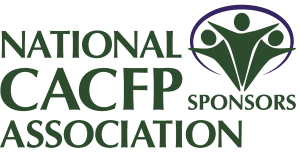







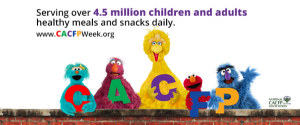



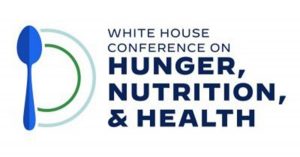




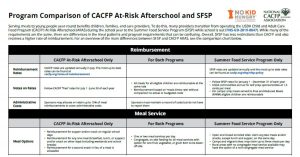

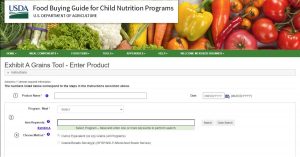
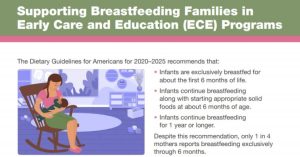





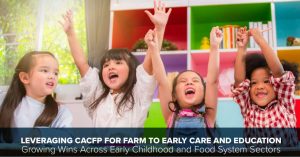








NCA Response – Proposed Rule for the Serious Deficiency Process
In February 2024, USDA released the proposed rule Serious Deficiency Process in the CACFP and SFSP. After meeting with members and extensive research NCA has submitted our response to USDA stating our position on the proposed changes.
Read More